Roses have long been celebrated as the ultimate symbol of beauty and elegance, making them a popular choice in landscaping projects worldwide. Their versatility, vibrant colors, and captivating fragrance bring life and charm to any outdoor space. But roses are more than just ornamental flowers—they offer practical and creative rose landscaping uses that transform an ordinary garden into a breathtaking sanctuary.
Whether you want to create a lush garden border, add vertical interest with climbing roses, or establish a fragrant retreat, rose landscaping uses can elevate your landscaping efforts to the next level. In this blog post, we’ll explore the top 10 rose landscaping uses that enhance your garden’s visual appeal and add structure, functionality, and timeless charm. Get ready to reimagine your outdoor space with the magic of roses!
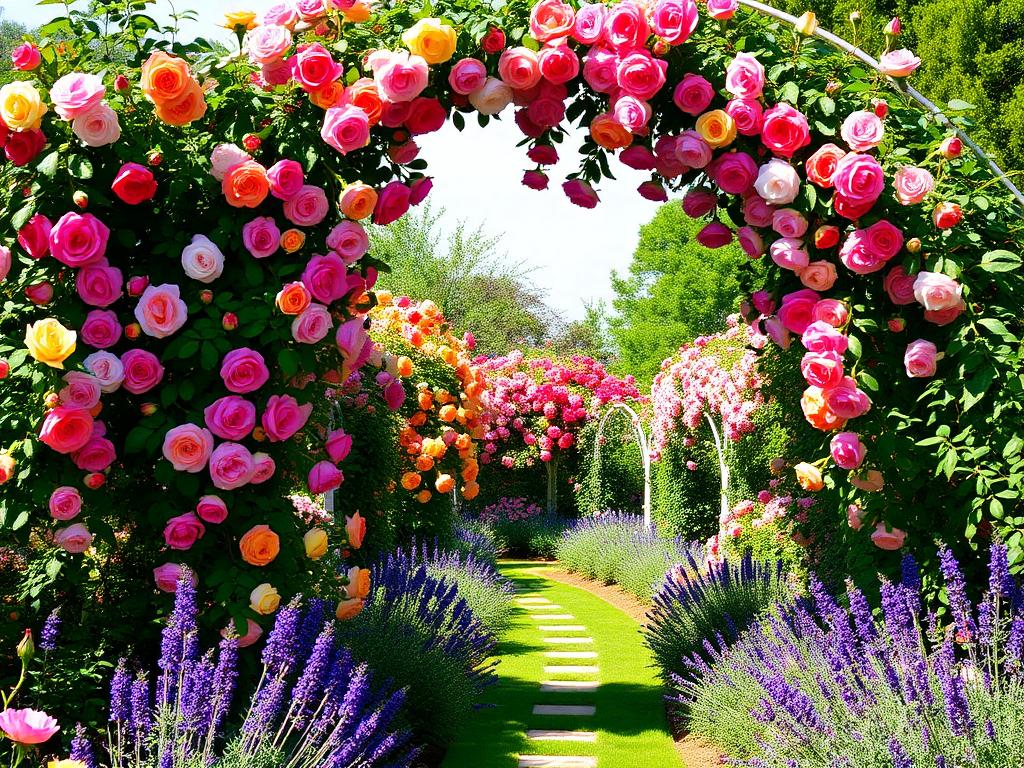
Why Choose Roses for Landscaping?
Roses are not just flowers but icons of beauty and grace that have graced gardens for centuries. Their unmatched versatility and variety make them an ideal choice for landscaping, whether aiming for a traditional garden or a more modern outdoor space. Here’s why roses stand out as the perfect addition to any landscape:
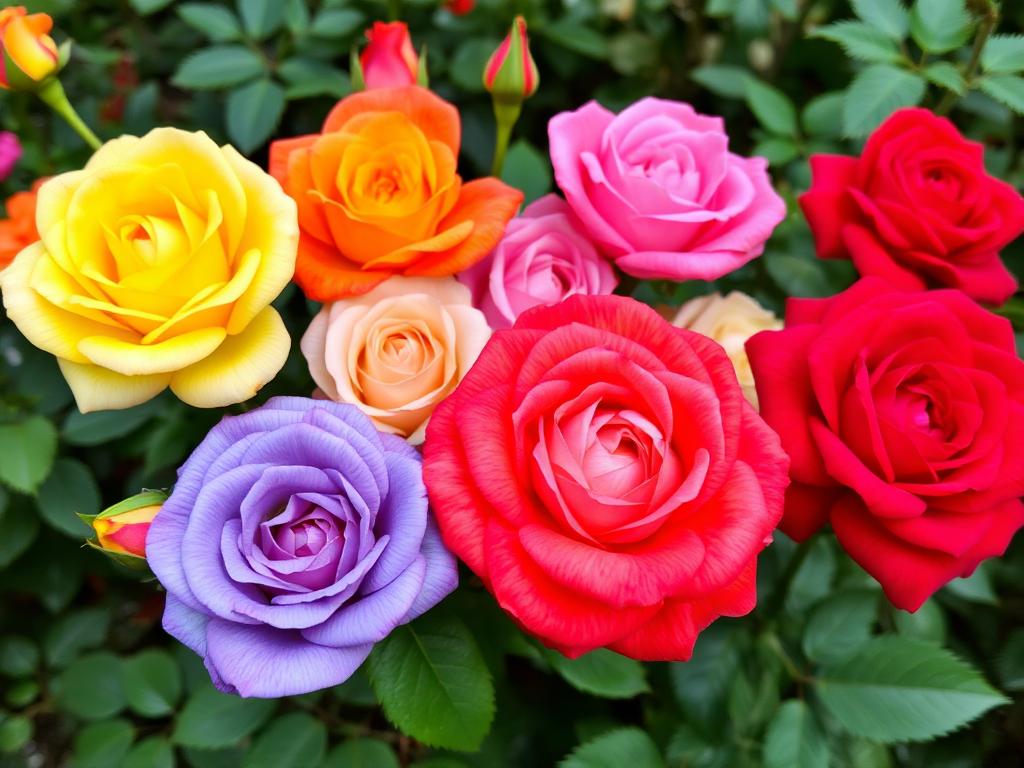
1. The Timeless Beauty of Roses
Roses have an innate charm that captivates gardeners and visitors alike. Their lush petals and vibrant hues can transform even the simplest garden into a visual masterpiece. From classic red roses symbolizing love to soft pastels that evoke tranquility, roses offer endless aesthetic possibilities. They create an inviting atmosphere, making your outdoor space a haven for relaxation and admiration.
2. A Wide Variety to Suit Every Need
One of the greatest advantages of roses is their incredible diversity. With thousands of species and hybrids, there’s a rose for every landscaping purpose:
- Climbing roses for trellises and walls.
- Shrub roses for creating dense hedges.
- Miniature roses for compact spaces or container gardening.
This variety allows you to customize your garden design and achieve the look you desire.
3. Aesthetic and Functional Benefits
Beyond their visual appeal, roses bring practical value to your garden:
- Natural Focal Points: Vibrant rose bushes draw attention and anchor garden designs.
- Privacy Screens: Dense rose hedges serve as natural barriers, offering both beauty and seclusion.
- Fragrance: Roses add a sensory dimension to your garden with their delightful scents, creating a soothing ambiance.
4. Environmental and Ecological Impact
Roses are not just beautiful; they also play a role in supporting local ecosystems. They attract pollinators like bees and butterflies, contributing to biodiversity. When paired with other flowering plants, roses create a pollinator-friendly environment that benefits your entire garden. Additionally, their dense foliage can help prevent soil erosion, making them a sustainable choice for landscaping.
By choosing roses for landscaping, you’re not only enhancing the visual appeal of your garden but also creating a space that’s functional, fragrant, and environmentally friendly. These timeless blooms offer a perfect blend of beauty and utility, making them an indispensable element in any landscaping project.
Creative Ways to Incorporate Roses in Garden Design
Roses offer unparalleled versatility, making them a favorite for enhancing garden aesthetics. Here are some innovative and practical ways to incorporate roses into your landscape design:
1. Borders and Pathways
Using roses along borders and pathways is an excellent way to define garden spaces while adding a touch of elegance. Low-growing varieties, such as ground cover roses or compact shrub roses, are ideal for this purpose. Their tidy growth habit and abundant blooms create a colorful, fragrant edge that guides visitors through the garden.
- Pro Tip: Choose disease-resistant varieties to minimize maintenance along high-traffic areas.
- Examples: Drift Roses, Flower Carpet Roses.
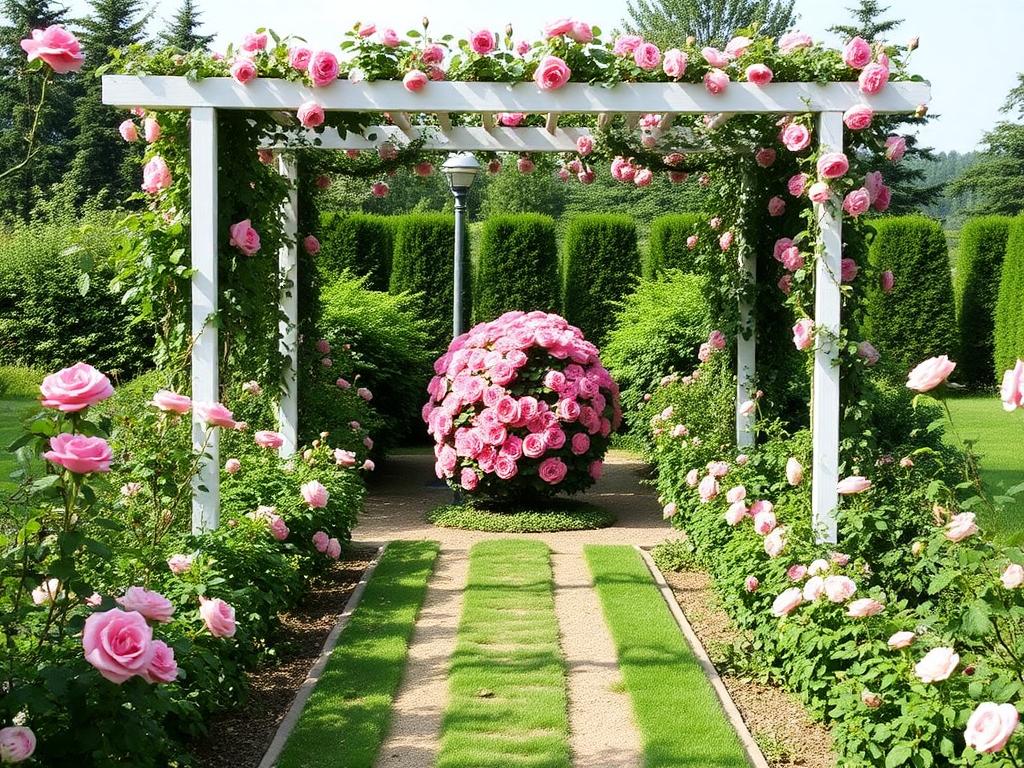
2. Focal Points in Garden Beds
Roses can serve as stunning focal points in your garden beds. A single vibrant rose variety or a cluster of complementary colors can draw the eye and create visual interest. Use taller shrub roses or hybrid tea roses for this purpose, as their upright growth habit and striking blooms make them natural show-stoppers.
- Pro Tip: Pair focal point roses with contrasting foliage plants like hostas or ornamental grasses to enhance their beauty.
- Examples: Double Delight Rose, Knock Out Roses.
3. Arches and Trellises with Climbing Roses
Climbing roses bring a vertical dimension to your garden by adding height and drama. Use them to adorn arches, pergolas, or trellises, creating a romantic and timeless look. As they grow, their cascading blooms form a picturesque canopy that can transform any garden entrance or sitting area.
- Pro Tip: Train climbing roses early and prune them regularly to maintain structure and encourage blooms.
- Examples: Eden Rose, New Dawn Rose.
4. Hedges and Privacy Screens
For gardeners seeking both beauty and functionality, rose hedges are an excellent choice. Dense-growing varieties can act as natural barriers, offering privacy while providing a wall of color and fragrance. Roses like shrub or English roses are perfect for creating hedges that are as practical as they are stunning.
- Pro Tip: Space the plants correctly and select varieties with continuous blooming habits for a lush, year-round effect.
- Examples: David Austin Roses, Rugosa Roses.
By incorporating these ideas into your garden design, you can take full advantage of the beauty and versatility that roses offer. Whether you’re creating a peaceful retreat or a vibrant outdoor space for entertaining, roses can truly transform your garden into a masterpiece.
Rose Varieties Perfect for Landscaping
Roses come in a remarkable variety of shapes, sizes, and growth habits, making them adaptable to almost any landscaping need. Choosing the right rose variety is crucial for creating a cohesive and visually appealing garden design. Below, we explore some of the most popular rose varieties and how they can be used to enhance your outdoor space:
1. Climbing Roses: Ideal for Trellises and Pergolas
Climbing roses are a favorite choice for adding vertical interest to a garden. With their long, arching canes and profuse blooms, these roses are perfect for covering structures like trellises, pergolas, fences, or walls. Popular varieties such as ‘Don Juan’ and ‘Iceberg Climber’ offer lush, colorful displays that create a romantic and dramatic effect.
- Best for: Vertical landscaping, creating shaded areas, and adding privacy.
- Care Tips: Provide sturdy support, prune annually to shape, and ensure ample sunlight for optimal growth.
2. Shrub Roses: Low-Maintenance Options for Hedges and Borders
Shrub roses are versatile and hardy, making them an excellent choice for garden borders or natural hedges. These roses bloom continuously throughout the season, providing consistent color and structure. Varieties like ‘Knock Out’ Roses and ‘Carefree Beauty’ are known for their disease resistance and easy maintenance.
- Best for: Defining pathways, creating privacy, or filling large spaces.
- Care Tips: Regularly deadhead spent blooms and fertilize during the growing season for vibrant flowers.
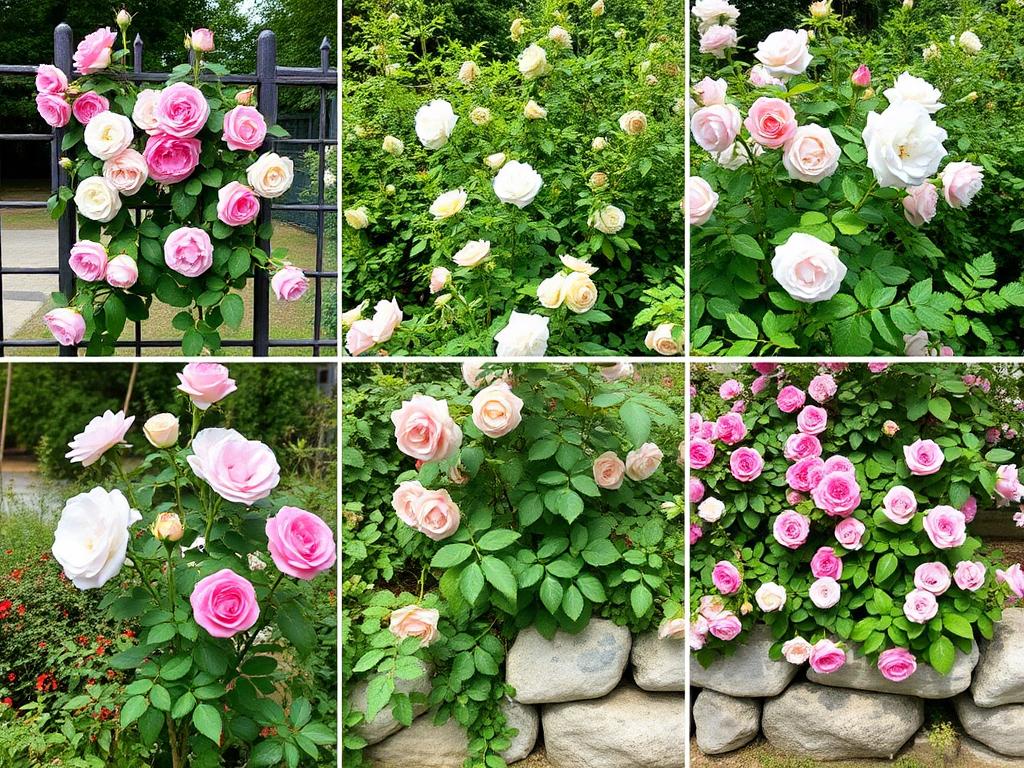
3. Ground Cover Roses: Perfect for Filling Gaps or Cascading Over Walls
Ground cover roses, also known as carpet roses, are low-growing varieties that spread horizontally, making them ideal for filling empty spaces, softening hardscapes, or cascading over garden walls. Varieties like ‘Flower Carpet Pink’ and ‘Drift Roses’ offer a blanket of blooms that require minimal upkeep.
- Best for: Erosion control, covering bare patches, or creating colorful edges.
- Care Tips: Ensure good air circulation to prevent mildew and water deeply but infrequently.
4. Miniature Roses: Great for Small Gardens or Container Landscaping
Miniature roses are compact and delicate, making them perfect for small gardens, patios, or container gardening. Despite their size, they deliver a big impact with vibrant blooms and a variety of colors. Varieties such as ‘Patio Hit’ and ‘Baby Paradise’ work well in tight spaces or as accents in larger landscapes.
- Best for: Urban gardens, balcony landscaping, or adding a splash of color to containers.
- Care Tips: Use well-draining soil in containers, water consistently, and provide occasional feeding to ensure healthy growth.
Selecting the right rose variety for your landscaping project allows you to make the most of their beauty and functionality. Whether you’re designing a sprawling garden, enhancing a cozy patio, or creating a statement with vertical elements, there’s a rose variety that fits your vision. Take the time to explore these options, and let your creativity blossom!
Tips for Maintaining a Rose Landscape
Maintaining a rose landscape requires attention to detail and consistent care to keep your roses healthy, vibrant, and thriving. Here are some essential tips to ensure your rose garden remains stunning throughout the seasons:
1. Soil Preparation and Planting
- Well-Drained Soil: Roses prefer soil that drains well to prevent root rot. Incorporate organic matter like compost or aged manure to enrich the soil.
- Optimal pH Levels: Maintain a soil pH between 6.0 and 6.5 for ideal nutrient absorption. Test your soil regularly and amend it with lime or sulfur if necessary.
- Proper Spacing: Allow adequate space between rose plants to promote air circulation, reducing the risk of fungal diseases.
2. Pruning Techniques
- Regular Pruning: Prune roses annually to remove dead or weak branches and shape the plant. This encourages new growth and more abundant blooms.
- Timing: Prune in late winter or early spring when the plant is dormant, but before new growth begins.
- Sterilized Tools: Use sharp, sterilized pruning shears to prevent the spread of diseases between plants.
3. Pest and Disease Management
- Common Pests: Watch out for aphids, spider mites, and Japanese beetles. Use insecticidal soap or neem oil to control infestations.
- Fungal Diseases: Black spots, powdery mildew, and rust are common issues. Apply fungicides as a preventive measure and ensure good air circulation around plants.
- Natural Solutions: Introduce beneficial insects like ladybugs or companion plants such as garlic and marigolds to repel pests naturally.
4. Watering and Mulching
- Deep Watering: Roses prefer deep, infrequent watering to encourage strong root systems. Water early in the morning to allow foliage to dry during the day.
- Mulch Application: Apply a 2-3 inch layer of mulch around the base of roses to retain soil moisture, regulate temperature, and suppress weeds. Organic mulches like bark or straw also improve soil health over time.
5. Seasonal Care and Fertilization
- Spring: Feed roses with a balanced fertilizer (e.g., 10-10-10) to support new growth.
- Summer: Deadhead spent blooms to encourage continuous flowering and monitor for pests or diseases.
- Fall: Reduce watering and stop fertilizing six weeks before the first frost to prepare roses for dormancy.
- Winter: Protect roses from extreme cold by mulching heavily around the base or using rose cones for additional insulation.
By following these tips, you’ll not only keep your roses looking their best but also extend their lifespan, ensuring they remain the crown jewel of your landscaping for years to come.
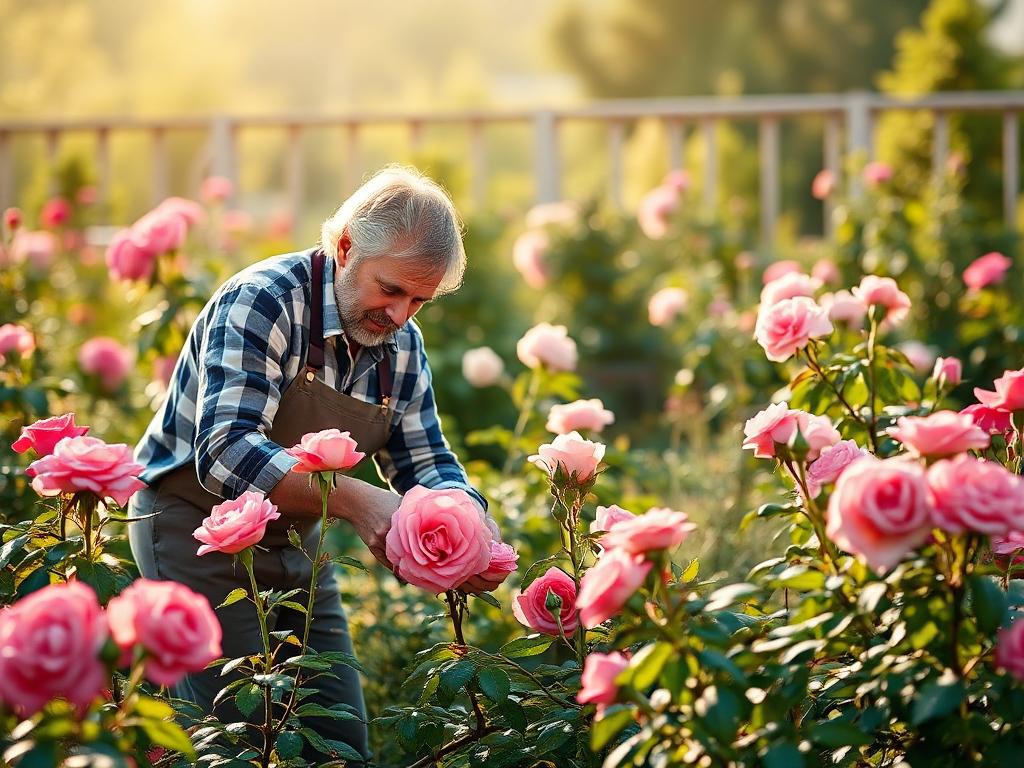
Enhancing Your Landscape with Companion Plants
Roses are stunning on their own, but pairing them with the right companion plants can elevate your garden’s beauty and functionality. Thoughtfully chosen companions enhance the visual appeal of your landscape, promote healthier rose growth, and create a harmonious ecosystem that benefits your entire garden. Here’s how you can enhance your landscape by pairing roses with complementary plants:
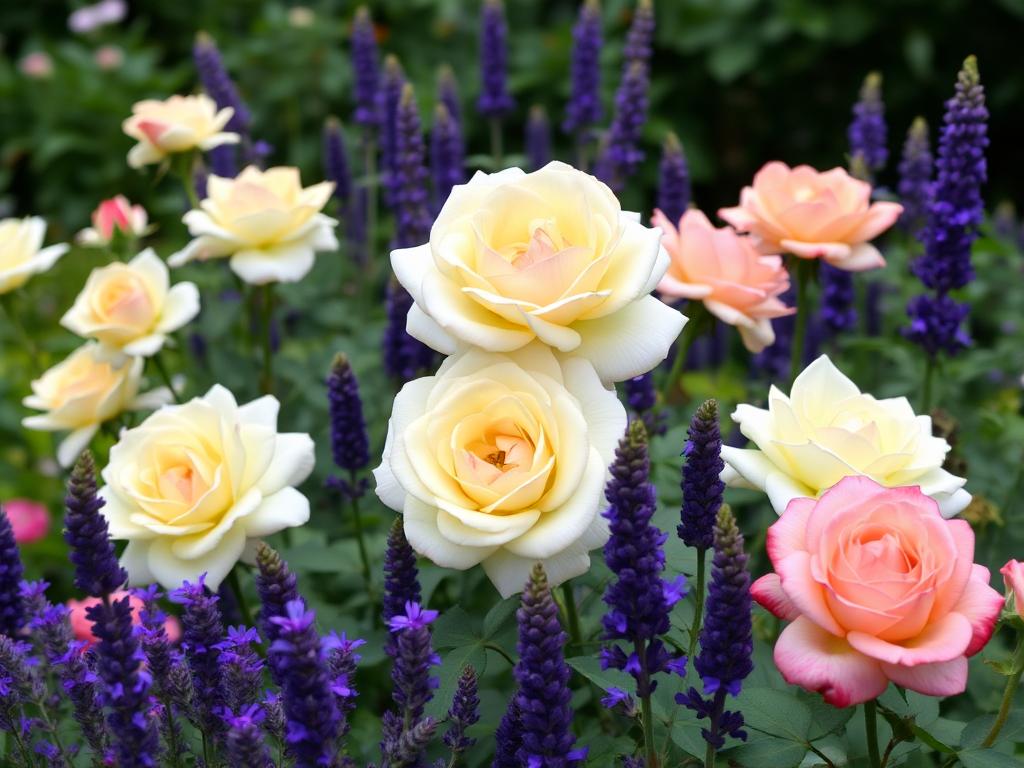
1. Complementing Colors
Pairing roses with plants that offer contrasting or harmonizing colors can create a visually stunning garden.
- Lavender: The soft purple hues of lavender beautifully contrast with vibrant rose blooms, adding a serene touch to your landscape.
- Salvia and Catmint: These plants bring cooler tones like blues and purples, which balance the warm and bold colors of roses.
- Hydrangeas: With their large, soft blooms, hydrangeas provide a perfect backdrop for roses, enhancing their elegance.
By mixing colors thoughtfully, you can design a garden that captivates the eyes and soothes the soul.
2. Practical Benefits
Some companion plants do more than just look good—they actively contribute to the health and growth of your roses.
- Marigolds: Known for repelling pests like aphids and nematodes, marigolds are excellent natural protectors for roses.
- Garlic and Chives: These plants help deter harmful insects and fungal diseases while their blooms add subtle beauty.
- Borage: This herb attracts pollinators, improves soil health, and pairs wonderfully with rose gardens.
Integrating these practical companions ensures that your roses thrive in a supportive environment.
3. Creating Layers and Depth
Layering plants of varying heights around roses adds depth and structure to your landscape.
- Tall Plants: Delphiniums or foxgloves can serve as a towering backdrop for shorter rose varieties.
- Ground Covers: Creeping thyme, sweet alyssum, or ground-cover roses fill in gaps and provide a lush base layer.
- Mid-Height Plants: Phlox or yarrow fit perfectly between taller backdrops and ground covers, creating a balanced composition.
By layering plants thoughtfully, your garden achieves a dynamic and three-dimensional look.
4. Eco-Friendly Gardening
Roses can play a pivotal role in an eco-friendly garden, especially when paired with pollinator-friendly plants.
- Bee Balm and Coneflowers: These attract bees, butterflies, and other beneficial insects that support pollination.
- Milkweed: Perfect for creating a habitat for butterflies, especially monarchs.
- Wildflowers: These low-maintenance plants provide diversity, ensuring a healthy garden ecosystem.
An eco-conscious approach not only enhances the beauty of your garden but also contributes to the local environment.
By selecting companion plants that complement roses in terms of color, function, and environmental benefits, you can craft a garden that is as practical as it is enchanting. With the right mix of plants, your rose landscaping will become a flourishing haven of beauty, biodiversity, and tranquility.
Conclusion
Roses are not just flowers; they are versatile landscaping tools that can redefine the character of any garden. Their stunning beauty, diverse varieties, and practical benefits make them a must-have for gardeners of all experience levels. Whether you want to create a vibrant focal point, line a charming garden path, or grow a fragrant wall of privacy, roses offer endless possibilities to enhance your outdoor space.
In this post, we explored the top 10 rose landscaping uses, from designing eye-catching arches with climbing roses to creating eco-friendly pollinator gardens with companion plants. Each use highlights the adaptability of roses and their ability to add a unique touch to gardens of all sizes and styles.
Transforming your garden with roses isn’t just about aesthetics—it’s about creating a serene and welcoming environment that reflects your personal taste. By incorporating roses into your landscaping, you can enjoy year-round beauty, support local ecosystems, and create a space where nature thrives.
So, why wait? Whether you’re a seasoned gardener or just starting, roses can bring unmatched elegance and functionality to your garden. Begin planning your rose landscaping journey today and witness the transformative power of these timeless blooms. Let your garden tell a story of beauty, growth, and creativity—one rose at a time!
